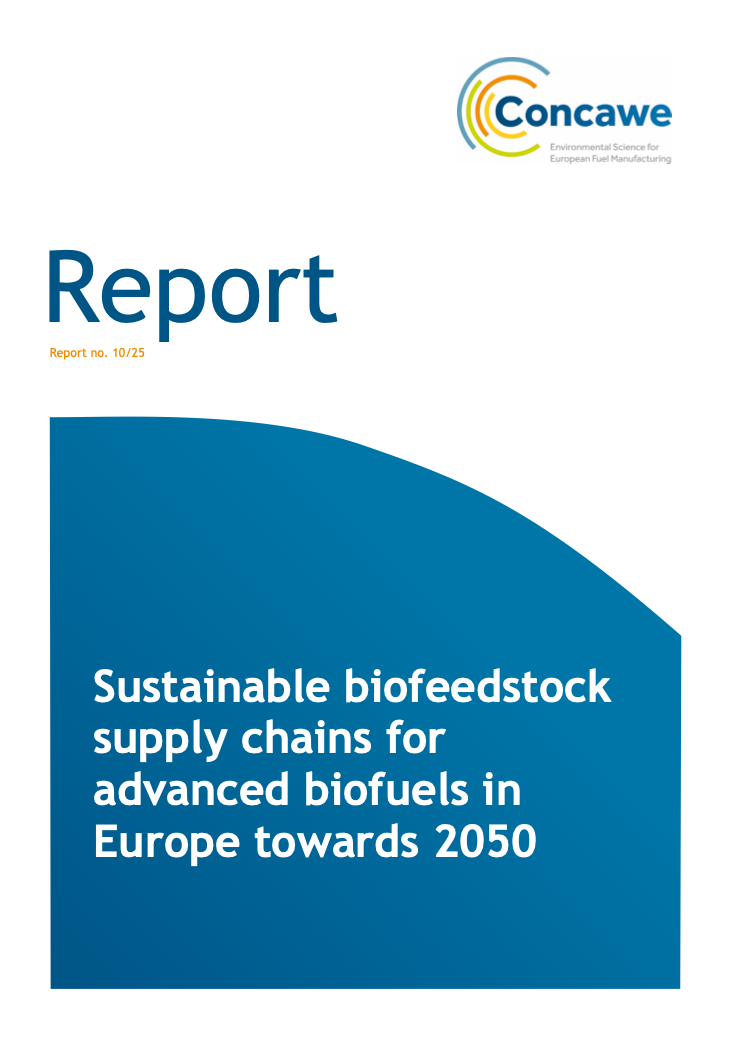Roland Berger: Integrated Fuels and Vehicles Integrated Fuels and Vehicles Roadmap to 2030+ | 2016

Executive Summary
EU road transport sector decarbonization and regulation post-2020 is undefined
In October 2014, the European Heads of States communiqué agreed on the 2030 Climate and Energy Policy Framework. This framework set binding targets for the reduction of greenhouse gas (GHG) emissions and non-binding targets for renewable energy consumption and improvements in energy efficiency. The overall GHG emissions reduction target of -40% (-43% for ETS sector and - 30% for non ETS sector) in 2030 below 2005 levels was in line with both the ambition to reduce GHG emissions in the European Union (EU) by 80-95% below 1990 levels by 2050 and the vision of the EU White Paper on Transport.
The Communiqué did not set any specific sectorial target for road transport decarbonization between 2020 and 2030. It did however state that the Commission should “further examine instruments and measures for a comprehensive and technology neutral approach for the promotion of emissions reduction and energy efficiency in transport, for electric transportation and for renewable energy sources in transport also after 2020”.
The current regulatory framework for vehicle emissions, carbon intensity of fuels and use of renewable fuels is only valid until 2020/2021 and the absence of any transport decarbonization polices post 2020 is making investors wary of low carbon vehicles and fuels. To help foster an informed debate, it was considered useful to develop a view on possible GHG abatement measures in the road transport sector and supporting policy elements that would deliver decarbonization to 2030 and beyond in a sustainable way. This also included assessing potential measures regarding technical achievability, infrastructure requirements, customer acceptance and costs to society, needed to incorporate fuel and vehicle technologies.
An independent evaluation of fuel and vehicle technologies has been undertaken
For this purpose, Roland Berger has been commissioned by a coalition of automotive companies and fuel suppliers to define and produce an Integrated Roadmap for EU Road Transport Decarbonization to 2030 and beyond. The study was commissioned to identify possible reductions in GHG emissions by considering the key elements of technical achievability, infrastructure needs, customer acceptance and which policies, currently being pursued, would lead to greater integration between the automotive and fuel sectors in order to meet the challenging decarbonization goals set out to 2030 and beyond. This study aims to provide an integrated roadmap taking into account the feasibility of all fuel and vehicle technologies along with infrastructure needs and the recommended policy framework beyond 2020. A key consideration was to identify a roadmap with the lowest, achievable GHG abatement costs to society.
This study incorporates existing data and views from a very broad range of studies and stakeholders from across the vehicle and fuel industries, research organizations, NGOs and EU policymakers. Nonetheless, one must acknowledge that evaluating developments until 2030 and beyond is rife with uncertainty and led to assessments, which were made as transparent as possible by means of variability ranges or sensitivity analysis.
A realistic reference case based on current regulation was developed for the EU until 2030
Based on projected fuel and vehicle costs for conventional internal combustion engines, mild and full hybrids, plug-in hybrids, battery electric vehicles, natural gas vehicles and fuel cell electric vehicles, a powertrain mix was derived for 2030 which constitutes a reference case based upon the current unaltered regulatory framework. This reference case predicts within two different scenarios expected market developments under the current regulatory framework without any additional policies after 2021 beyond prevailing legislation with increasing alternative powertrain3 and fuel penetration in addition to the existing high penetration of improved ICE powertrains.
After comparing the transport sector’s emissions under the current regulatory framework with 2030 GHG emissions reduction targets, technologies were identified to achieve additional GHG abatement at the lowest cost to society. In order for these technologies to contribute to the abatement of the road transport sector’s GHG emissions, the recommended policies need to address the current obstacles facing these technologies.
SUMMARY OF STUDY OUTCOMES
1) The reference case shows that maintenance of the existing vehicle efficiency and fuels regulations to 2030 will lower tank-to-wheel GHG emissions from road transport to 647 Mton representing a 29% reduction compared to 2005 levels, achieving almost aspired level for 2030.
Based on assumptions developed in conjunction with a wide range of stakeholder input and reference studies regarding vehicle fleet development and the current regulatory framework, the road transport sector will reduce tank-to-wheel GHG emissions by 29% until 2030 (compared to 2005) and bring down tank-to-wheel emissions close to reference level of -30% vs 2005.
Transport will also deliver tank-to-wheel emissions savings of 191 Mton CO2e between 2015 and 2030 to reduce the total well-to-wheel GHG emission in 2030 to 862 Mton CO2e. The well-to wheel- emission savings comprise a 23% reduction in tank-to-wheel emissions and a 22% reduction in well-to-tank emissions.
Optimized ICEs (Gasoline and Diesel) are the major contributor to the reduction of passenger car GHG emissions with significant improvements until 2020 and the subsequent penetration of effective technologies into the fleet. Despite the expected reduction in cost of alternative technologies, their share of new car sales will remain relatively small and their influence on overall emissions currently remains marginal. Efficiency technologies such as improved diesel combustion employed in commercial vehicles including light commercials, buses and trucks as well as use of LNG will likely over compensate for the effect of significant increases of transport volumes on the GHG emissions side based on the modelling scenarios. Biofuels also contribute significantly to the reductions in GHG emissions of both passenger cars and commercial vehicles.
2) GHG abatement in road transport sector will cost approx. 150 - 200 EUR per ton of CO2e avoided
Bringing optimized ICEs as well as alternative fuels and powertrain technologies to market, represents a major challenge for the oil and auto industries and will account for EUR 380-390 bn of cumulated incremental powertrain costs from 2010 until 2030. However, these incremental powertrain costs make reductions in GHG emissions possible and will reduce the cost to society over the longer term through till 2030. The overall effects are
- Accumulated GHG abatement of approx. 1,090 Mton CO2e,
- Fuel cost savings between EUR 170 and 220 bn and
- Average societal abatement cost of approx. ~ 150-200 EUR/ton CO2e after deduction of fuel savings
3) To further abate GHG emissions in road transport by 2030, more biofuels and hybrid powertrains for passenger cars as well as more biofuels and new truck concepts for commercial vehicles are a cost effective way of delivering more GHG savings from transport and with supportive polices they can deliver an extra 34 Mton CO2e by 2030.
From the GHG abatement cost perspective, it is most efficient for society to promote the following specific technologies until 2030:
- Full deployment of the E10 grade, to reach the 7% energy cap of conventional biofuels
- Higher advanced ethanol blends for gasoline such as E20
- Drop-in advanced biofuels for diesel such as R33
- Hybridized powertrains, such as mild hybrids and full hybrids
These technologies have not yet realized their full GHG reduction potential in terms of deployment under the current regulatory framework and come at costs of 0–100 €/ton-CO2 abated. The additional abatement potential of these technologies is approx. 34 Mton CO2e (WTW).
In commercial vehicle segments, additional cost-efficient GHG abatement is possible through
- Higher uptake of drop-in advanced biofuels for diesel in all segments
- New heavy duty truck (HDT) concepts with increased gross vehicle weight and higher maximal length for improved aerodynamics (having negative GHG abatement costs)
- Improved efficiencies of current ICEs and hybridization of powertrains for Light Commercial Vehicles (LCV) such as mild and full hybridization (MH, FH) and HDT (FH)
Alternative powertrain measures in these segments are currently very costly due to high adaptation costs.
As a longer-term requirement (beyond 2030) for the EU road transport sector, the study indicates that the only fuel and vehicle combinations technically suited to achieving "ultra-low carbon emission mobility" are:
- Highly-efficient conventional powertrains (Mild- and full-Hybrid) fuelled with advanced and waste based biofuels/-gases (for passenger cars (PC) and commercial vehicles (CV))
- PHEVs fuelled with advanced biofuels and low carbon, renewable electricity (for PC)
- BEVs fuelled with low carbon, renewable electricity (for PC)
- FCVs fuelled with low carbon, renewable hydrogen (for PC)
The latter powertrain technologies also offer the advantage of zero pollutant emissions.
4) Policy makers should adopt an integrated approach in policy design and promote the deployment of cost-efficient GHG abatement technologies post-2020
The current regulatory framework does not fully address all the barriers preventing a higher penetration of biofuels and hybrids for passenger cars to achieve the 2030 GHG reduction target. It is recommended that additional policies are introduced to provide greater investor certainty and improve consumer demand for these lower cost abatement options.
In many commercial vehicles the implementation of efficiency technology in powertrains is TCO- driven – Only in LCVs, the implementation of fuel-saving measures segment is supported by the current regulatory. But, at vehicle level, an adaption of the regulatory framework on current vehicle length and weight limitation is necessary.
Until 2030, demand- and supply-side policy measures are needed at EU and member state level to address obstacles faced by more cost-efficient technologies enabling them to make greater inroads into the market.
Policy makers need to implement consistent policies and balanced measures that provide incentives to both demand and supply alike by addressing fuel suppliers, OEMs and customers equally. Such an integrated approach aims to:
- Create long-term sustainable market (demand side-) to:
– Encourage consumers to buy carbon-saving vehicle technologies
– Convince fuel customers to choose low carbon fuels by introducing CO2 based taxation
components for fuels
– Improve customer awareness of the benefits of biofuels concerning GHG emissions as well
as the technological benefits of efficient powertrains and their cost-attractiveness - Create planning security for investments by fuel suppliers and OEMs (supply-side) to
– Enable development of advanced biofuel production by providing a strong and sustained
price signal for the product at least until the advanced biofuels is commercially mature. This signal can be the tax exemption of biofuel content in market fuels in or via a fuel taxation bonus depending on the biofuel content. Both can be combined with a CO2 based taxation component
– Support for use of the Innovation Fund for investments in innovations in low carbon technologies. The Innovation Fund should be used to fund capex and opex for initial advanced biofuel plants (fuel supplier/biofuel supplier)
– Increase production of vehicles which are societally cost-efficient with highly efficient conventional technologies and fuel compatibility of vehicles (OEMs)
– Counting the renewable share of the fuel that the vehicle is compatible with (above 10% volume ethanol or 7% volume FAMEs) as zero-CO2 tailpipe emissions to enable the further integration with regard to fuels and vehicles and accelerate the fleet deployment of vehicles compatible with higher biofuel blends
5) Placing fuels in a market based system (MBM) will provide a potential source of funding for the demand side measure needed to 2030 and will also lead to GHG abatement becoming an economy-wide rather than a sectorial issue based on the lowest cost to society.
It is recommended that policy makers consider placing fuels in a MBM as complementary policy to vehicle CO2 standards, fuels and infrastructure policies. Initially, the MBM should be designed to recycle the revenues from the sale of allowances for fuels to provide the funding needed to bring new low carbon fuels and vehicles to market. Once low carbon fuels and vehicles can be deployed affordably en masse, then the MBM can be the primary GHG reduction policy and other policies (vehicle efficiency, fuels etc.) can be removed.
Recente artikelen
PHB presentatie: Breaking down de prijs van de brandstof aan de pomp

Concawe: Sustainable biofeedstock supply chains for advanced biofuels in Europe towards 2050 | 2025


